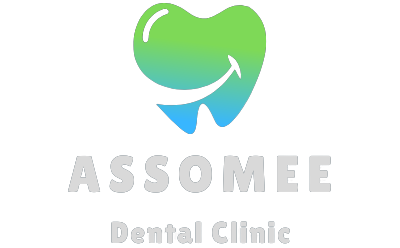Kidney cysts are fluid-filled sacs that develop in the kidneys, potentially causing discomfort and complications. These cysts can vary in size and number, ranging from a single cyst to multiple cysts in both kidneys. While most kidney cysts are benign and do not cause any symptoms, some can lead to pain, infection, or even kidney damage. In this article, we will explore the symptoms, causes, and diagnosis of kidney cysts, as well as various treatment options available. Additionally, we will discuss lifestyle changes that can help manage kidney cysts and provide insights into the outlook for individuals living with this condition. Whether you have been recently diagnosed with kidney cysts or are seeking to understand this condition better, this article will serve as a comprehensive guide to help you navigate through the complexities of kidney cysts.
1. Understanding Kidney Cysts: Symptoms, Causes, and Diagnosis
Kidney cysts are fluid-filled sacs that develop on or within the kidneys. They can vary in size, ranging from small cysts that are barely detectable to larger ones that can cause significant discomfort and complications. Understanding the symptoms, causes, and methods of diagnosis for kidney cysts is crucial in order to manage the condition effectively.
Symptoms of kidney cysts may not always be present, especially in the early stages. However, as the cysts grow larger or multiply, they can lead to noticeable signs such as pain or discomfort in the back or abdomen. Other symptoms may include high blood pressure, blood in urine, frequent urinary tract infections, or a feeling of fullness or heaviness in the abdomen.
The exact cause of kidney cysts is not fully understood. Some cysts are acquired, meaning they develop over time due to certain factors or conditions. These can include long-term kidney damage, chronic kidney disease, or certain genetic disorders such as polycystic kidney disease (PKD). PKD is a genetic condition that causes numerous cysts to form in the kidneys, leading to kidney enlargement and potential complications.
Diagnosing kidney cysts typically involves a combination of medical history assessment, physical examination, and imaging tests. During a physical examination, a healthcare provider may palpate the abdomen to feel for any abnormal masses or swelling. Imaging tests such as ultrasound, computed tomography (CT) scan, or magnetic resonance imaging (MRI) are commonly used to visualize the kidneys and identify the presence of cyst
2. Treatment Options and Management for Kidney Cysts
Treatment Options and Management for Kidney Cysts
When it comes to kidney cysts, the treatment and management approach largely depend on the size, number, and symptoms associated with the cysts. In most cases, simple kidney cysts do not require any treatment as they are typically benign and do not cause any complications. However, if the cysts are causing discomfort or other complications, medical intervention may be necessary.
1. Monitoring: One of the most common approaches for managing kidney cysts is regular monitoring. This involves periodic ultrasounds or imaging tests to keep track of the cyst’s size and any changes over time. Monitoring is typically recommended for small cysts that are not causing any symptoms or complications.
2. Lifestyle modifications: Making certain lifestyle changes can help manage kidney cysts and prevent their progression. These modifications may include maintaining a healthy diet, limiting salt intake, avoiding excessive alcohol consumption, and quitting smoking. Additionally, staying hydrated and maintaining a healthy weight can also be beneficial.
3. Pain management: If kidney cysts cause pain or discomfort, over-the-counter pain relievers such as ibuprofen or acetaminophen may be recommended. However, it’s crucial to consult a healthcare professional before taking any medication, especially if there are pre-existing medical conditions.
4. Drainage or aspiration: In some cases, large or symptomatic kidney cysts may require drainage or aspiration. This procedure involves the insertion of a long, thin needle through the skin and into the cyst to drain the fluid. It can
3. Living with Kidney Cysts: Lifestyle Changes and Outlook
Living with kidney cysts can be challenging, as it requires individuals to make certain lifestyle changes to manage their condition effectively. While treatment options can vary depending on the size and severity of the cysts, it is important for patients to adopt certain habits that can help alleviate symptoms and possibly prevent further complications.
One of the key lifestyle changes for individuals with kidney cysts is maintaining a healthy diet. Consuming a well-balanced diet that is low in salt and processed foods can help manage blood pressure and reduce the risk of kidney damage. It is advisable to limit the intake of sodium, as excessive sodium can lead to fluid retention and increase blood pressure. Instead, incorporating fresh fruits, vegetables, whole grains, and lean proteins into the diet can provide essential nutrients while promoting overall kidney health.
Additionally, individuals with kidney cysts should prioritize hydration. Adequate water intake can help flush out toxins from the body and promote kidney function. It is recommended to drink at least eight glasses of water per day, unless advised otherwise by a healthcare professional. However, it is important to consult a doctor before making any drastic changes to fluid intake, as excessive hydration can also strain the kidneys.
Regular exercise is another crucial aspect of managing kidney cysts. Engaging in moderate physical activities, such as walking, swimming, or cycling, can help maintain a healthy weight, lower blood pressure, and improve overall kidney function. However, it is important to consult a healthcare professional before starting any exercise regimen, as certain activities may need to be modified depending on the
